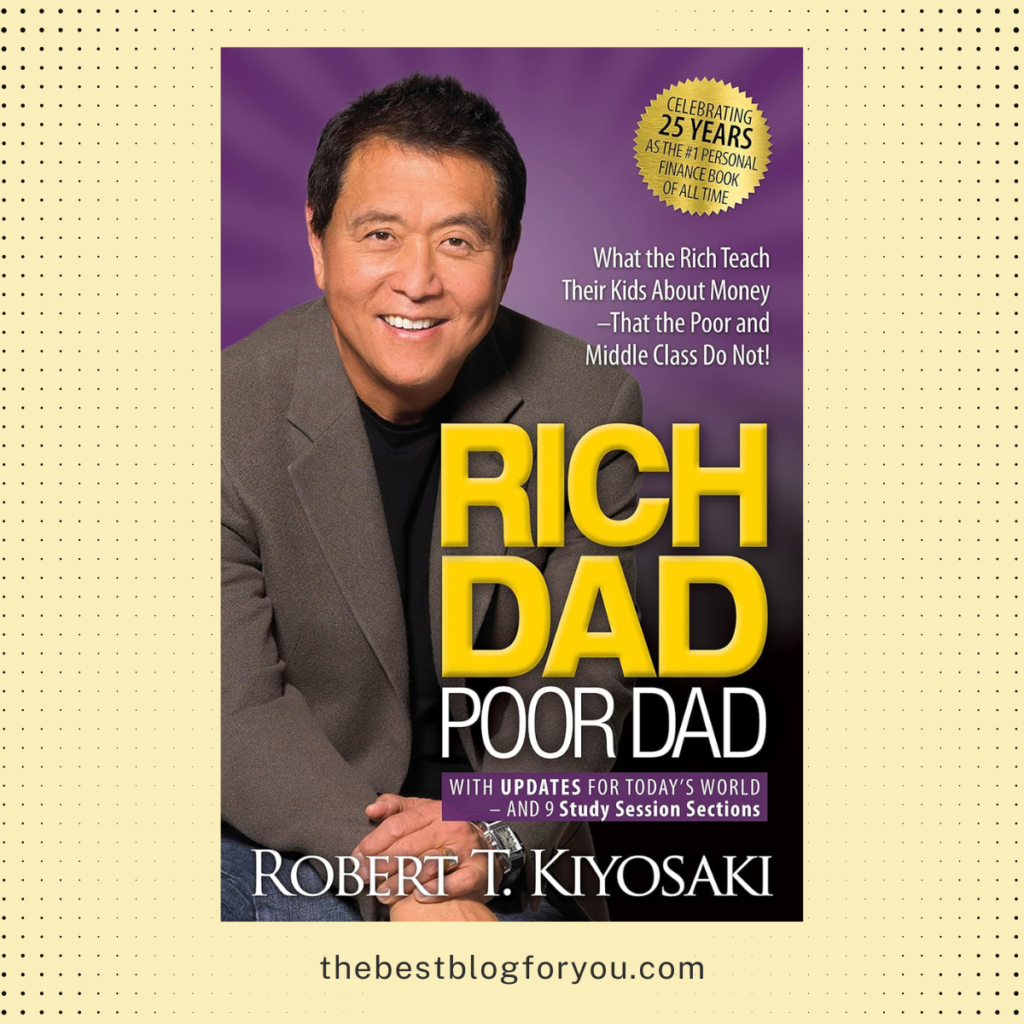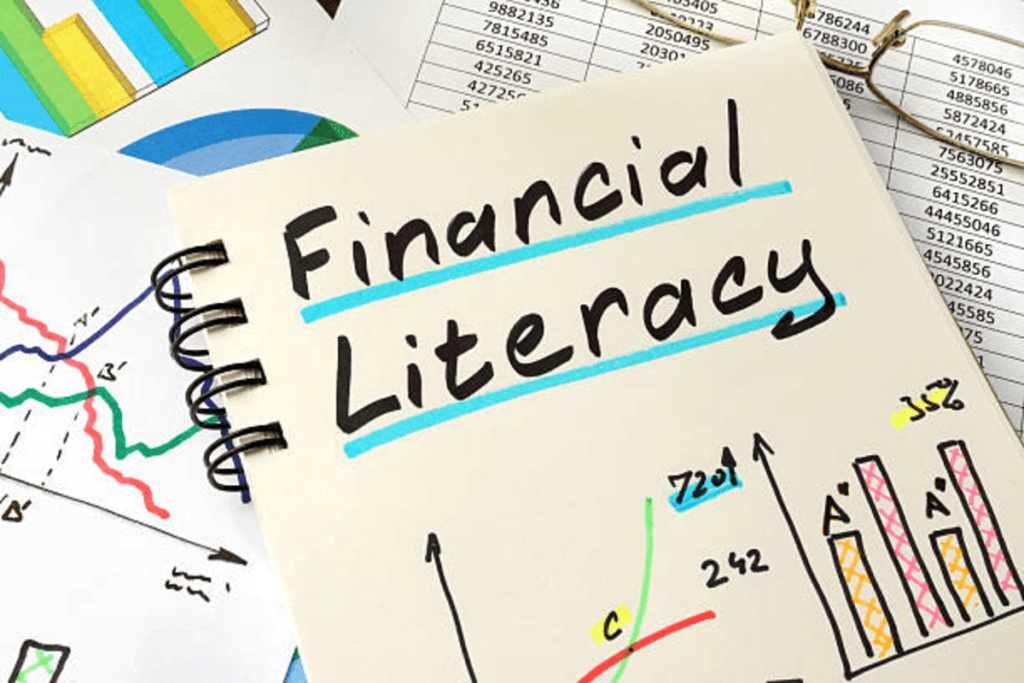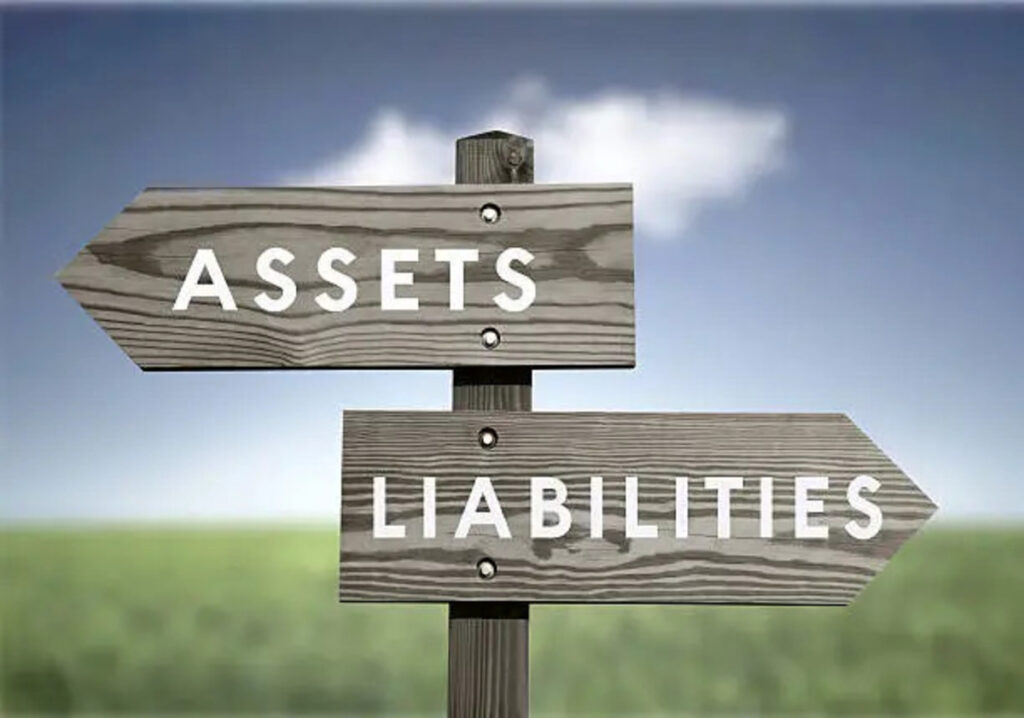
Intro
“Rich Dad Poor Dad,” authored by Robert Kiyosaki, is a transformative book that challenges traditional notions of wealth, education, and financial success. Through the contrasting perspectives of two father figures—his biological father, who was financially educated but worked for a salary, and his best friend’s father, a savvy entrepreneur—Kiyosaki presents a compelling argument about the importance of financial literacy and understanding how money works. This book has become a staple for anyone interested in improving their financial situation and offers valuable lessons that can be applied to both personal and professional life. In this post, we will explore key takeaways from “Rich Dad Poor Dad” that can help anyone navigate their financial journey.
Understanding the Importance of Financial Education

A central theme in “Rich Dad Poor Dad” is the necessity of financial education. Robert Kiyosaki argues that the traditional school system falls short in teaching crucial financial skills, leaving many people ill-prepared for real-world financial challenges. He stresses that understanding financial concepts like investments, taxes, and personal financial planning is indispensable for anyone aiming to achieve financial independence.
The book encourages readers to actively seek out financial knowledge beyond conventional education. This could involve reading books, attending seminars, taking courses, or even learning from financial mistakes. Kiyosaki’s perspective is that financial literacy is not a one-time acquisition but a continuous learning process. He believes that equipping oneself with the right financial tools and knowledge can significantly impact one’s financial health and future.
Kiyosaki’s narrative showcases how both successes and failures serve as educational experiences. He urges readers to be proactive in their financial education by exploring various resources and strategies. The idea is to build a solid foundation that can help make informed decisions, whether it’s about investing, managing debt, or planning for retirement.
This emphasis on lifelong learning and self-education resonates throughout the book, making it clear that financial literacy is a critical skill set that everyone should prioritize. By understanding how money works, individuals can make better decisions, avoid common financial pitfalls, and ultimately achieve greater financial stability and independence.
The Concept of Assets and Liabilities

Kiyosaki introduces a pivotal distinction that separates those who build wealth from those who struggle financially: understanding the difference between assets and liabilities. In “Rich Dad Poor Dad,” assets are defined as anything that brings in money, while liabilities are anything that drains money from you. Many individuals mistakenly believe their homes are assets, but Kiyosaki argues that if something costs you money—through mortgage payments, maintenance, and other expenses—it’s actually a liability.
The key takeaway here is to concentrate on accumulating income-producing assets like stocks, real estate, and businesses while minimizing liabilities. For instance, rental properties can generate monthly income, stocks can provide dividends, and businesses can yield profits. By prioritizing these kinds of investments, you create multiple streams of income that work for you, rather than the other way around.
This principle is crucial for achieving financial independence. It shifts the focus from merely earning a paycheck to strategically building wealth through smart investments. Kiyosaki emphasizes that a fundamental step in financial literacy is recognizing what constitutes an asset versus a liability. This awareness allows for more informed financial decisions that can lead to long-term prosperity.
Understanding this concept is transformative because it encourages a proactive approach to managing your finances. Instead of accumulating liabilities that offer no return, the goal is to build a portfolio of assets that generate ongoing income and appreciate in value over time. This strategic approach to finance not only enhances your wealth but also provides a solid foundation for future financial stability and growth.
The Rat Race and How to Escape It

Kiyosaki’s “rat race” describes the endless cycle of earning money only to spend it on liabilities, keeping individuals financially trapped. Escaping this cycle necessitates a paradigm shift from simply working for a paycheck to strategically investing in income-generating assets. The author advocates for a focus on building passive income streams, such as dividends from stocks, rental income from real estate, or profits from entrepreneurial ventures. These assets can gradually replace the need for a traditional salary, allowing for greater financial freedom.
A critical aspect of escaping the rat race involves developing a clear financial plan and sticking to it. This means setting financial goals, tracking expenses meticulously, and making informed decisions about where to allocate money. Instead of accumulating consumer debt and spending on non-essential items, Kiyosaki encourages readers to channel their resources into investments that yield returns.
Another essential component is the cultivation of financial discipline and resilience. The journey to financial independence is fraught with challenges, and it requires a steadfast commitment to learning and adapting. Kiyosaki emphasizes the importance of viewing financial setbacks as opportunities for growth rather than insurmountable obstacles.
By changing one’s mindset and approach to money, it’s possible to break free from the constraints of the rat race. Financial independence is not about earning more to spend more but about creating a sustainable financial ecosystem where money works for you. This shift in perspective can lead to a more secure and prosperous financial future, liberating individuals from the constant cycle of earning and spending.
The Power of Entrepreneurship

One of the most compelling themes in “Rich Dad Poor Dad” is the power of entrepreneurship as a means to financial freedom. Kiyosaki argues that traditional employment, with its steady paycheck and limited growth potential, often confines individuals within financial boundaries. In contrast, entrepreneurship offers the opportunity to break free from these limitations by creating multiple streams of income and building substantial wealth.
Kiyosaki emphasizes the importance of adopting an entrepreneurial mindset, which involves identifying opportunities, innovating, and taking calculated risks. This mindset not only helps in starting new ventures but also in recognizing and capitalizing on opportunities in everyday life. Whether it’s launching a business, investing in a startup, or even developing a side hustle, the entrepreneurial approach provides the flexibility to navigate financial landscapes creatively and effectively.
The book encourages readers to explore their passions and skills to find business opportunities that align with their interests. Kiyosaki shares examples of how he and others have turned simple ideas into profitable businesses, demonstrating that entrepreneurship is accessible to anyone willing to think differently and work hard.
Additionally, entrepreneurship can serve as a powerful vehicle for financial education. Running a business requires understanding financial statements, managing cash flow, and making strategic decisions—all of which are crucial skills for financial literacy. By engaging in entrepreneurial activities, individuals can gain hands-on experience that traditional education systems often fail to provide.
Kiyosaki also highlights the importance of resilience and perseverance in the entrepreneurial journey. Success in business often involves overcoming failures and setbacks, but these challenges are part of the learning process that ultimately leads to greater financial success and independence.
The Importance of Taking Risks

Kiyosaki emphasizes that calculated risks are essential for achieving financial success. He argues that fear of failure often prevents people from seizing opportunities that could lead to substantial rewards. Instead of avoiding risk, he advocates for embracing it as a vital component of the learning process. Through personal anecdotes, Kiyosaki illustrates that every failure can provide valuable insights and lessons that pave the way for future success.
Taking calculated risks means assessing the potential downsides and upsides, making informed decisions, and being prepared for various outcomes. Kiyosaki shares his experiences in real estate and entrepreneurship, demonstrating how strategic risk-taking has been instrumental in building his wealth. He encourages readers to move beyond their comfort zones and to view risks as opportunities for growth rather than obstacles to be avoided.
The book highlights that being too risk-averse can lead to missed opportunities, stagnation, and financial mediocrity. Instead, Kiyosaki promotes a mindset that views challenges and uncertainties as part of the journey toward financial independence. This involves not only taking risks but also learning from them and adapting strategies as needed.
In practical terms, this could involve investing in a new business venture, buying a rental property, or even changing careers to pursue a more lucrative path. Kiyosaki underscores the importance of thorough research and planning when taking risks, ensuring that they are well-calculated and aligned with long-term financial goals. By embracing risk with the right mindset and preparation, individuals can unlock new avenues for financial growth and stability.
Building a Strong Financial Network

In “Rich Dad Poor Dad,” Robert Kiyosaki underscores the value of cultivating a robust financial network. He believes that building relationships with individuals who are financially knowledgeable can open doors to new opportunities and provide crucial guidance. Kiyosaki advises readers to surround themselves with mentors and peers who possess financial acumen, as their insights and experiences can significantly enhance one’s own financial education.
Kiyosaki advocates for proactive networking, encouraging readers to attend seminars, workshops, and conferences that focus on financial literacy and wealth-building strategies. These events are fertile grounds for meeting like-minded individuals and industry experts who can offer advice, share experiences, and even become potential business partners or collaborators.
Moreover, leveraging online platforms and social media can also be an effective way to connect with financial experts and communities. Engaging in forums, participating in online discussions, and following thought leaders can provide ongoing education and keep you updated on the latest financial trends and opportunities.
By actively seeking out and maintaining these relationships, you not only gain valuable knowledge but also create a support system that can help you navigate financial challenges and seize opportunities. Networking isn’t just about expanding your social circle; it’s about creating a rich tapestry of resources and allies who can contribute to your financial growth and success.
The Role of Real Estate in Wealth Building

Real estate plays a crucial role in Kiyosaki’s financial strategies, and he sees it as a powerful means to build wealth and generate passive income. “Rich Dad Poor Dad” discusses the potential of real estate investments not just to appreciate over time, but also to provide consistent cash flow through rental income. Kiyosaki stresses the importance of understanding the real estate market and identifying properties that can generate income. He also highlights the benefits of leveraging financing options to grow one’s investment portfolio, making real estate a cornerstone for achieving financial stability and growth.
One of the key aspects Kiyosaki focuses on is the importance of doing thorough research before making any real estate investments. This includes understanding market trends, evaluating property values, and assessing the potential for rental income. He encourages readers to seek out properties in locations with strong growth prospects and to consider the long-term benefits of property ownership.
Kiyosaki also discusses various strategies for real estate investment, such as buying undervalued properties, fixing them up, and either renting or selling them at a profit. Additionally, he emphasizes the importance of leveraging—using borrowed capital to increase the potential return of an investment. By strategically using other people’s money, investors can significantly enhance their purchasing power and investment returns.
By focusing on real estate as a key investment vehicle, Kiyosaki demonstrates how individuals can create a diversified portfolio that not only builds wealth but also offers financial security.
Mindset and Financial Success

Kiyosaki emphasizes that cultivating the right mindset is a critical component of financial success. A key takeaway is the importance of adopting a growth mindset, which involves continuously seeking knowledge and being open to new financial strategies. This mindset helps individuals adapt to changing economic conditions and find innovative solutions to financial challenges.
Kiyosaki also underscores the significance of resilience—viewing setbacks as learning opportunities rather than failures. By maintaining a proactive and positive outlook, individuals can better navigate financial obstacles and stay motivated on their journey toward financial independence. The book encourages readers to believe in their ability to achieve financial success, reinforcing that mindset is as crucial as financial acumen in building wealth.

4 thoughts on “Key Takeaways from Rich Dad Poor Dad”
Comments are closed.